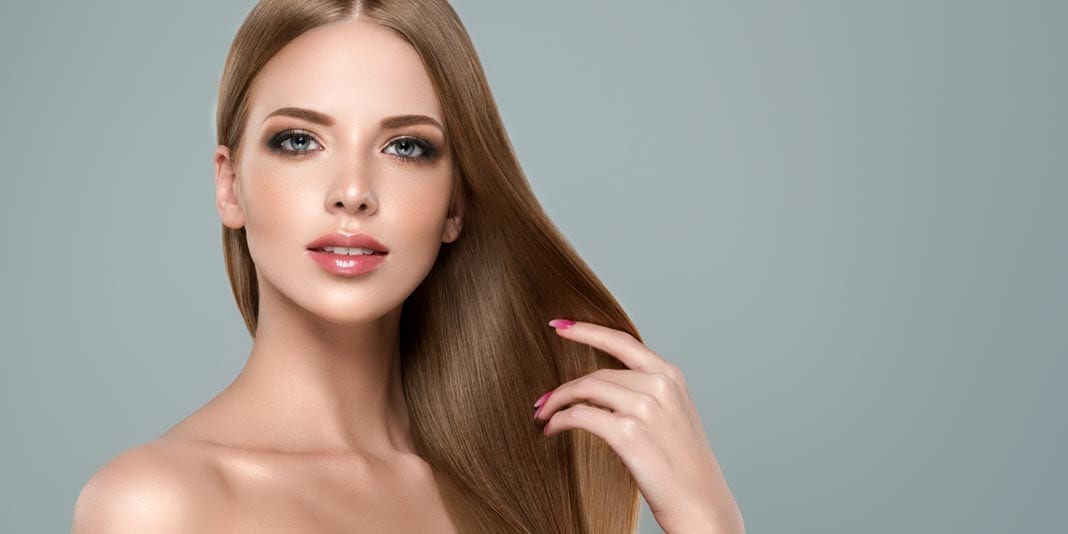When you think “aging,” wrinkles probably come to mind. Few people think about how or if hair ages, but it does. No, you don’t actually get “wrinkles” in your hair.
Unfortunately, most people don’t know their hair ages. When they do finally start paying attention to it, it’s because they’re losing it. If you don’t want to wait until it’s too late, it is best to understand the hair cycle while you can still prevent hair loss and protect your healthy strands.
Your hair goes through different stages before it falls out. It is young and healthy in its early years and then becomes old until it dies. This is a normal process, but can become out of control if hair falls out too quickly. Understanding the hair cycle better can help you prevent losing hair prematurely. It’s also the key to growing long, healthy hair.
About the Hair Cycle
Your hair has different phases it goes through before it dies and falls off:
Anagen Phase
This is the active phase when your hair is growing quickly. During this stage, hair can grow up to 7 years before falling off. Prolonging this stage is key to growing your hair. Your hair follicles are active and generate a lot of hair strands. Each hair strand clings to the scalp and has access to nutrients to support its growth.
Catagen Phase
This stage is short and is when hair strands start to shrink away from the scalp. Hair strands in this stage are prone to breakage and pulling out.
Telogen Phase
This is when your hair stops growing. However, it is an opportunity for new hairs to start growing (yay baby hairs!). The resting hairs are preparing to shed.
Exogen phase
This is when your hair falls off. Don’t be alarmed—each strand of hair is in its own stage. Shedding is completely normal, since it makes room for new hair strands to grow! What is alarming is when shedding is excessive and you start noticing thin patches on your scalp.
What can disrupt the hair cycle?
Losing hair at a faster rate than it grows can lead to hair loss over time. Male pattern baldness is a known issue, but women have started to focus on their hair health as well over the last few years.
There is a hormone that can cause baldness in men and women known as DHT (dihydrogen testosterone). While it does not have harmful effects on the body, it does seem to affect hair follicles. DHT can reduce the growth stage (anagen) and lengthen the resting stage (telogen) of hair follicles. Over time, the affected follicles become inactive, no longer able to produce hair.
How can I prevent early balding?
It is important to note that growing hair is not vital for your survival. Your body will send nutrients to more crucial areas of the body, such as your bones, muscles, teeth, brain, heart, and lungs. In other words, every system needed to keep you alive gets priority over your hair. Since your hair is a (non-living) extension of your body, it will grow after all your immediate needs are being met. Proper nutrition, hydration, and stress management are important for maintaining hair growth.
In order to prevent DHT from clogging the hair follicles, there are preventative measures you can take to keep your hair healthy longer, including:
-
- Eat foods with lots of nutrients, such as fruits, vegetables, and protein-based foods—fish, chicken, and nuts.
- Stay hydrated—aim for at least 2 liters of water every day.
- Avoid processed junk foods and drinks, including alcohol.
- Exercise for at least 45 minutes every other day.
- Massage your scalp with clean fingers for at least five minutes every day.
- Switch to herbal products with ingredients that suit your hair porosity. [link to hair porosity post]
- Invest in essential oils, like peppermint and rosemary. Peppermint oil improves blood flow to the scalp to supply the hair with nutrients.
How to Grow Even Longer Hair
To keep hair follicles active, stimulate the scalp with the steps listed above. As hair gets longer, however, it requires more upkeep. To achieve and maintain long hair, the scalp needs continued stimulation and the ends need more TLC.
Longer hair means a longer route for nutrients to get from the scalp to the ends, resulting in split ends. Split ends that keep growing upward cause the hair to get weaker as it breaks away from the scalp. That’s why trims are helpful—they remove the dead and split ends so hair looks fuller.
Some further steps to add to your hair care routine to achieve and maintain the Rapunzel look:
Detangle your hair from the ends and work your way up slowly.
Wear your hair in a loose braid or bun before you sleep (or on a windy day) to protect it.
Sleep with a satin cap or on a satin pillowcase to retain your hair’s moisture at night.
Invest in products that cater to your hair’s porosity to best support its structure.




































